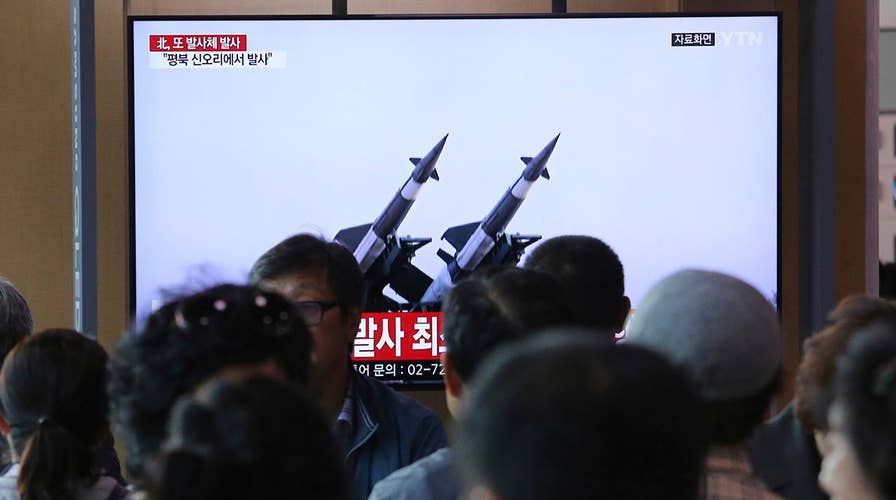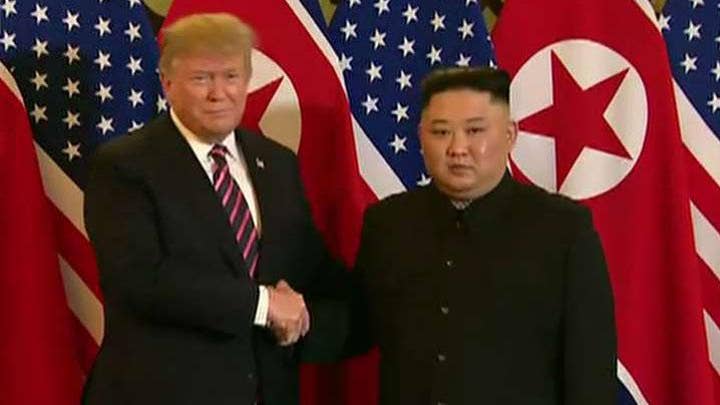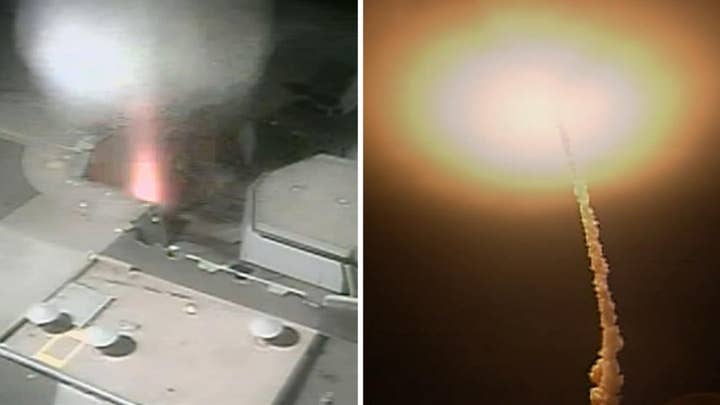North Korea fires 2 short-range missiles, 5 days after previous launch
The U.S. tests a long-range missile in California 10 minutes after the North Korea exercise; Greg Palkot has the details.
North Korea fired two short-range missiles on Thursday, according to South Korean military, as the U.S. responded with an intercontinental ballistic missile test of their own just 10 minutes later.
The launch, the second such move in less than a week, occurred around 4:30 p.m. local time from the North’s Sino-ri missile base, the South’s joint chiefs of staff said in a statement. The base is located around 130 miles north of the border with South Korea. The missiles flew 260 and 170 miles respectively, according to South Korean military officials. The U.S. insisted the timing of their own test was entirely coincidental.
The base is believed to operate Rodong short- and medium-range ballistic missiles, according to the New York Times.
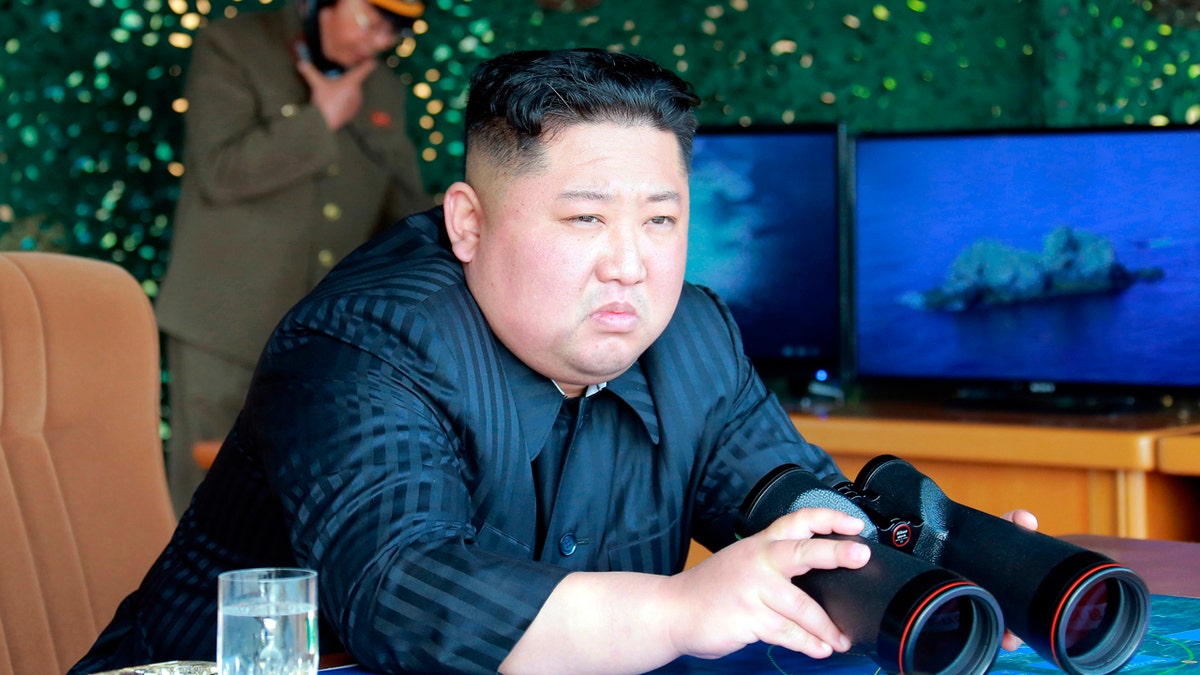
North Korean leader Kim Jong Un. (Korean Central News Agency/Korea News Service via AP)
“The Sino-ri missile operating base and the Rodong missiles deployed at this location fit into North Korea’s presumed nuclear military strategy by providing an operational-level nuclear or conventional first-strike capability against targets located both throughout the Korean Peninsula and in most of Japan,” the Times quoted from a study published by analysts for the Center for Strategic and International Studies.
POMPEO DISMISSES NORTH KOREA'S REJECTION OF HIM AS US NEGOTIATOR
South Korea's presidential national security director, Chung Eui-yong, has been monitoring the situation and was communicating with defense officials and the JCS by video.
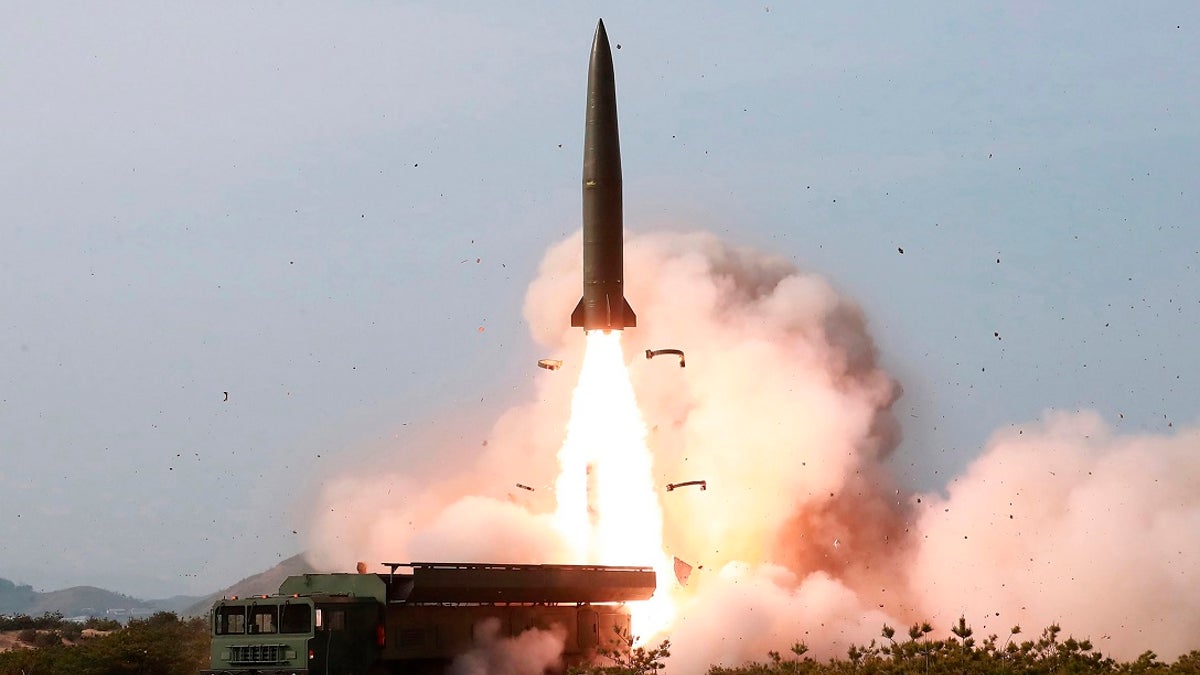
This Saturday, May 4, 2019, file photo provided by the North Korean government shows a test of weapon systems, in North Korea. (Korean Central News Agency/Korea News Service via AP, File)
The firing comes five days after the North launched a barrage of short-range projectiles from its east coast. Through its state media, the North described the earlier firing as a “defense units” test of its rocket launchers and tactical guided weapons.
Thursday's firing comes as Trump's negotiator for North Korea, Stephen Biegun, visits Japan and South Korea to discuss North Korean denuclearization efforts.
US ENVOY: NORTH KOREA DENUCLEARIZATION MUST NOT BE INCREMENTAL
The U.S. Air Force, meanwhile, tested a long-range missile from Vandenberg Air Force Base in California within 10 minutes of the reported launch by Pyongyang. The American intercontinental ballistic missile flew 4,200 miles into Pacific from a base in California, according to the Air Force. The launch of the Minuteman III intercontinental missile was the second missile launch this month and the fourth this year.
Linda Frost, Deputy, Media Operations of the Air Force Global Strike Command, told Fox News that the timing of both the U.S. and North Korean tests were not related.
“It’s important to note that our test launch is not a response or reaction to world events. The launch calendars are built three to five years in advance, and planning for each individual launch begins six months to a year prior to the launch,” she said.
North Korea last conducted a major missile test in November 2017 when it launched an intercontinental ballistic missile that could demonstrate the potential capability to reach the U.S. mainland. Analysts have said if the North decides to resume testing banned ballistic weapons, it could signal the rogue nation is turning away from diplomacy.
Tensions between the North and the U.S. were somewhat soothed when North Korean leader Kim Jong Un and President Trump met for two summits. The second meeting in February ended abruptly when both sides disagreed over sanctions relief for the North. The U.S. did not believe the North was offering enough disarmament measures in order to grant widespread sanctions relief it sought.
CLICK HERE TO GET THE FOX NEWS APP
After Saturday's launches, Trump tweeted that Kim “knows that I am with him & does not want to break his promise to me. Deal will happen!”
Kim said he is open to a third meeting with Trump but set this year’s end as a deadline for Washington to offer mutually acceptable terms for an agreement.
Fox News' Lucas Tomlinson contributed to this report.
The Associated Press contributed to this report.








































